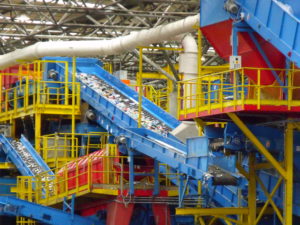
There is no doubt that it is essential to promote and support material recovery and recycle based production systems. The issues raised by a circular economy, that is gaining currency in Italy too acknowledges the need to start inverting the linear mode1 , still so often applied to make and consume goods. Every experience and best practice are welcome when they help us to understand how we can inverse the course and guarantee a more sustainable fashion. No doubt, a larger number of textile producers process recycled raw materials. Though not being aware of it, style and design departments have often started to adopt an eco-design approach; they wonder what green content they can bestow their collections. Beside bio fibres (cotton first), the use of second life materials is considered a value one has to emphasize when making green garments. Provided the quality of recycled materials should not be lower than that of new materials and that the price be advantageous. It is not an easy task for niche or non-standardised products. Second life materials mostly available on the market are PET recycled polyester2 and polyamide from recycled fishing nets and fitted carpets3. Usually, recycled manmade yarns result from a mechanical recycling process (more sustainable than a chemical process); they are subject to the Life Cycle Assessment, a strict method to enable manufacturers to weigh the environmental impact of the process and to obtain an EPD (Environmental Product Declaration) based on ISO 14020 Standards. Some manufacturers prefer the GRS – Global Recycled Standard certification for their recycled goods; it allows them to certify the actual contents of recycled materials in their products and its traceability along the entire supply chain. These are important instruments to avoid slipping into green washing. The input of recycled polymers into the textile industry is, as a second step, the response to the need of a green reputation in the fashion universe. First, it was the attempt to solve a huge problem: how to manage the huge, increasing volume of non-biodegradable plastics used and wasted every day. In fact, yarn manufacturing is just a side issue in the recycle process of polymers input from all fields, from building to packaging and of course textiles too. Otherwise, only in Italy, approximately 900,000 tons plastics would be brought to a disposal site4. Bravely input in fashion garments, recycled fibres are welcome in tech textiles (automotive, packaging, flooring, furnishing, building, PPE).
AN UNCONFORTABLE, UNDESIRABLE HERITAGE: TOXIC CHEMICALS
By now, the recycle industry is a complex reality expected to grow and generate jobs all along the supply chain (collection, selection, logistics, system management, checking, R&D) that governs a lot of items and post consumer products. One can easily understand how difficult it is to check the presence of dangerous chemicals in each product to be recycled; the Reach regulation is not so reassuring neither: a major percentage of the goods on the market (probably even most of them) are not made in Europe; hence, the degree of chemical safety is hard to predict. In fact, avoiding dangerous substances in the manufacturing process is an important target. As the saying goes, better safe than sorry.
DOES THE FUTURE BELONG TO BIOPOLYMERS?
Growth forecasts of biopolymers are rosy (as you know, they are widely used in packaging and disposable items). A study carried out in 2015 by the German Nova Institut’s research centre suggests the production of biopolymers will triple in the next few years to reach 17 million tons by 2020. Will textiles find a place in this scenario? Insofar as the press tells us nice stories of waste from other industries turned into yarns and fabrics (milk, orange peel, apple cores, rice bran), such projects often remain something that ‘I want but I can’t’. We have to enhance this research trend. However, apart from lab tests, two questions arise: is there a logistic-production supply chain able to govern the conversion of cellulose or protein material into reasonable production lots? How much does that supply chain impact on water consumption, energy consumption, emissions and the use of chemicals? Without an appropriate answer to these questions, we stay in the commendable field of pure research, with no impact on the volume of materials employed and on waste. Are we ready to discuss in terms of eco-design? Going for sustainable raw materials is an important step, yet we have to go ahead. When we design a product, we have to consider its life cycle (maintenance, washing, duration) and its end. E.g., we should make more and more recyclable and biodegradable products. This consideration is circulating among spinning mills where they have developed some bio-based manmade fibres: however, weaving mills are still not involved in the process. The same can be said for the destination of finished garments and accessories at the end of their life cycle. Who knows? What if in a near future, a coat or a bag label will tell us how to disassemble and recycle it? Let us wait for the time to come.
by Aurora Magni
Notes:
1Based on “raw material extraction-processing-usage-waste”.
2From Newlife to number of suggestions from Radici Group, just to give a couple of examples.
3See Econyl by Aquafil and Fulgar yarns.
4Approximately 15 kgs/per capita (Source Corepla, 2015). However, considering that the average consumption of plastics in Europe is 60kgs per citizen, there is still a long way to go.




